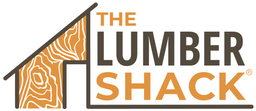A tree slice – also commonly referred to as a cookie – is a cross-section cut of a log. You can typically find tree slices in circle or oval cuts, but sometimes you can find the occasional odd-shaped tree slice, too. Keep reading to hear all about tree slices and how to use them for your next project!

What does a tree slice tell us?
Your standard tree slice is made up of a few different sections, and each one helps to bring the slice character:

Tree Slice: Outer Bark
The outermost part of the tree slice is called the Outer Bark. The outer bark helps to protect the tree from extreme heat and cold, insects, and diseases. Many makers and professionals prefer to remove this outer bark from their slice since it tends to dry out and fall off after a while.
Tree Slice: Phloem (Inner Bark)
The next layer is called the Phloem or inner bark. This is the area where the tree moves sugar from the leaves or needles down to other areas of the tree – like the branches and roots. This sugar is made into food that the tree needs to help it grow.
Tree Slice: Cambium
The Cambium is the next part of the slice. This section is only one cell thick and it resides within the inner bark. The cambium is where all of the tree’s diameter growth happens, which you can see as growth rings.
Tree Slice: Sapwood
Sapwood is the layer that carries the sap along with other vital nutrients from the roots up to the leaves of the tree. Sapwood is the part of the tree that give it the most strength.
Tree Slice: Growth Ring
As the tree ages, Growth Rings appear. Growth rings are typically two different colors: the lighter part being the early wood, and the darker part being the late wood. Early wood grows in the spring while late wood grows throughout the summer. Growth rings are often used to find out how old a tree is.
Tree Slice: Heartwood
Last up is the Heartwood. Heartwood is old sapwood that doesn’t carry sap or nutrients anymore. This part of the tree is where the trunk gets its stiffness. In many trees, the heartwood is darker than the sapwood, as you can see below in the black walnut tree slice!

What can I use a tree slice for?
There are TONS of projects you could use a tree slice for. Basically anything you would make out of a standard slab could be made with a tree slice instead. We’ve seen anything from a charcuterie board to a coffee table, or a cribbage board to wall art! Below are a few examples of projects using slices from The Lumber Shack!

While tree slices are often beautiful on their own, they can really be brought to life with some creativity and a little bit of epoxy
What can I use a tree slice for?
Choosing the right tree slice really boils down to what sort of project you are working on. For example, if you want to use a lot of epoxy to add color or communicate a theme, we would recommend looking for slices that have large voids or cracks. Not only would the epoxy add a lovely, creative touch, but it would also solidify the slice.
If you want the wood to speak more for itself, we’d recommend looking for a slice that has a lot of character. Features that might add character are burl, knots, spalting, and many many more.
If you are still unsure of which tree slice will work the best for your next project, talk to one of The Lumber Shack’s wood experts!


